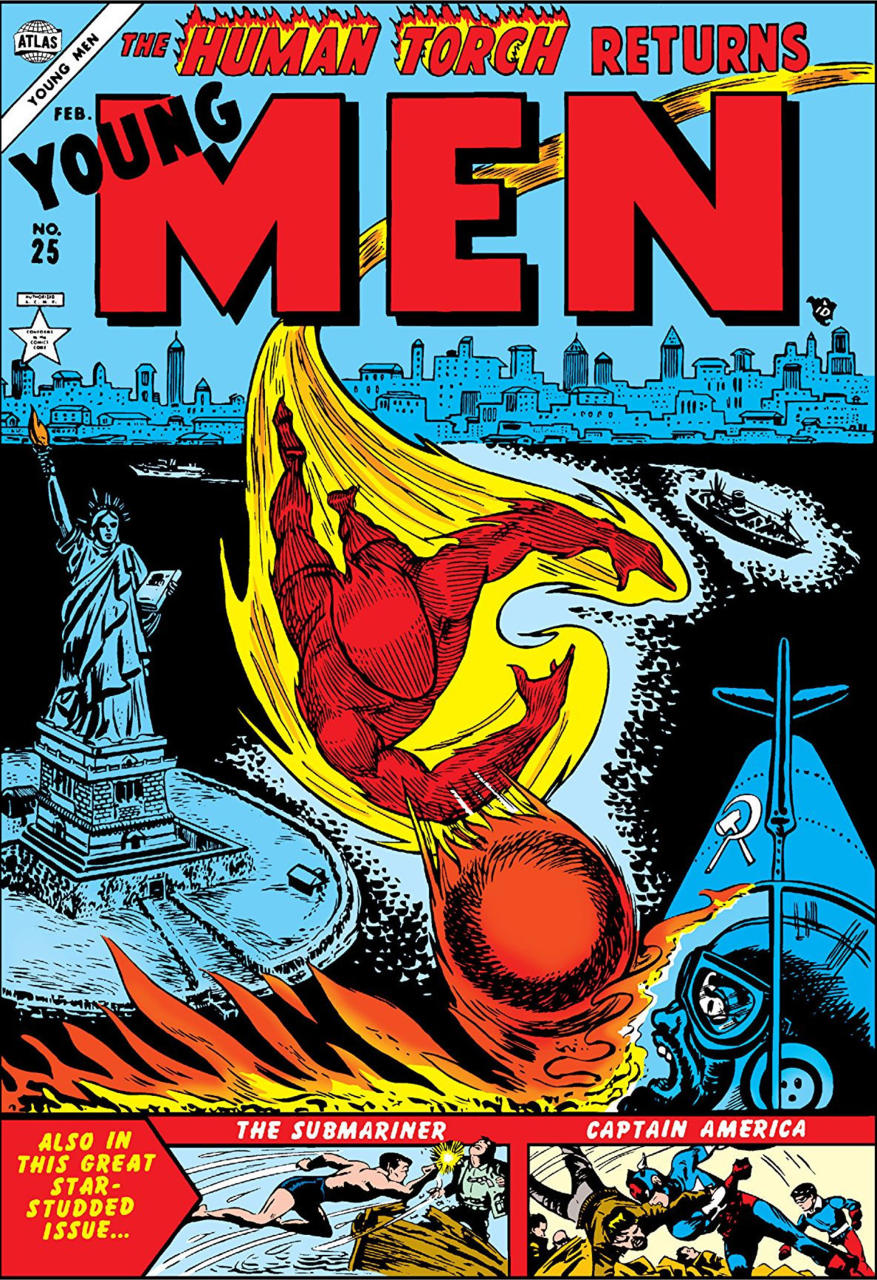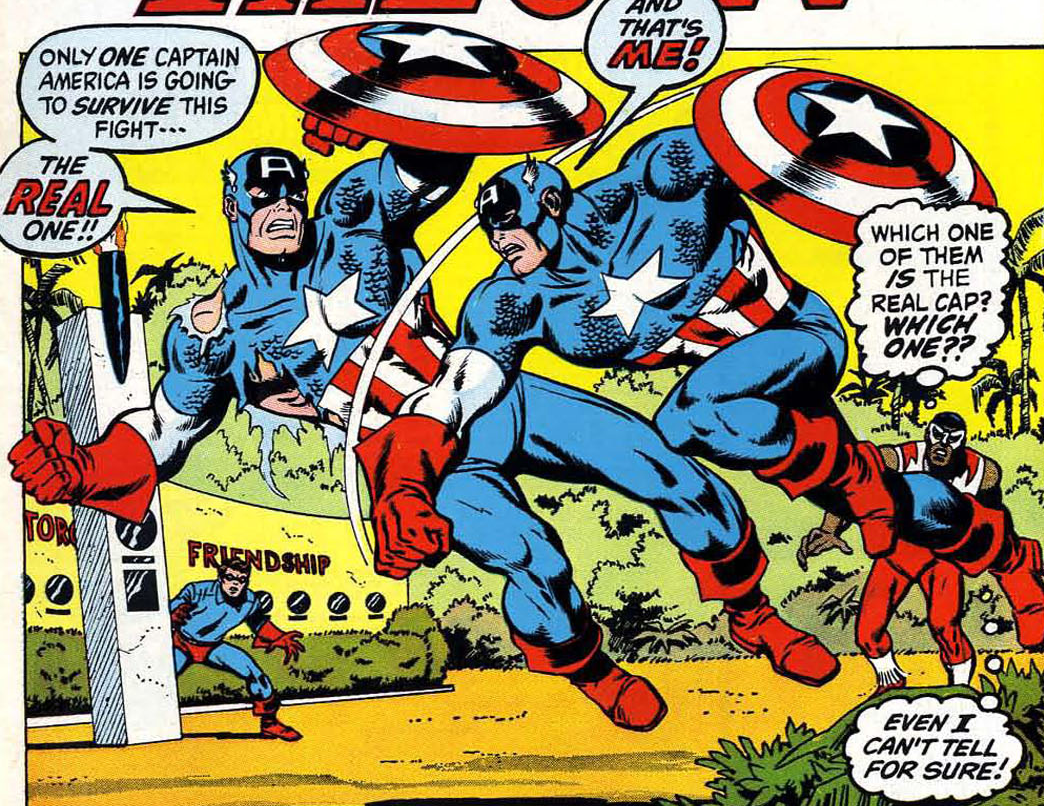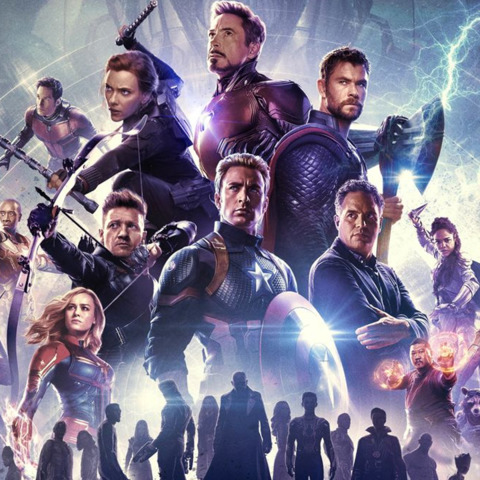Trying to figure out exactly what's going to happen in Phase 4 of the MCU? So are we. With Spider-Man: Far From Home just over the horizon and the possibility of a multiverse brewing, the future of our favorite Marvel heroes is more mysterious than ever.
Regardless if you loved or hated Captain America's Endgame finale, or if you prescribe to the writers' or the director's explanation of what actually happened in that scene, one fact remains: a version of Steve Rogers now exists (or existed) through the 1950s in America. Sure, maybe it was an alternate 1950s we'll never see on screen and can't reference in our history books, but it's still the post-war era in America, no matter how the quantum physics shake out.
This left us wondering: Do the comics leave any clues as to how something like that would actually shake out for our favorite Star Spangled Man With A Plan?
The answer is a completely bizarre yes and no.
Understanding The Real Life History Of Cap
The first thing you need to understand about Captain America comics is how the whole "frozen and woken up in the modern era" thing we all tend to take for granted as Steve Rogers' defacto origin story was actually an invention of the 1960s, 20 years after Steve was introduced in the comics, not the original game plan for the character. In fact, just about every part of Steve Rogers' origin story is a somewhat modern invention. Just like the other heroes of the '30s and '40s, Captain America was introduced with only the most cursory background. The idea of skinny Steve Rogers being empowered by a super serum wouldn't come for another couple decades.
Captain America comics were published through the end of World War II, despite the character's waning post-war popularity. The idea that he "died" in the late '40s? Like skinny Steve, that wasn't a thing yet. Cap was shuffled around a bunch of different titles as his publisher, Timely, hopped him from one team to the next through the 1950s. In 1946, he lead the All Winners Squadron; in 1948, Bucky was shot and taken out of action to be replaced as a sidekick by Cap's girlfriend, Betsy Ross (no, really) aka Golden Girl; and by 1953, he'd undergone a bit of a re-brand for a headline role in Young Men Comics. Welcome to the age of Captain America: Commie Smasher.

As you might imagine, commie smashin' Cap didn't really do all that well in terms of sales. This was the pre-Marvel era where the concepts of things like superhero shared universes were in their infancy and without a consistent story or team--and with post-war paranoia ramping up daily--the idea of a propagandistic children's character rapidly lost its appeal. By 1954, Captain America had been completely shelved--not killed off, just no longer under mainstream publication.
And then a little publishing phenomena we know as Marvel Comics happened. In the early 1960s, superhero comics found their footing again as legendary creators Jack Kirby and Stan Lee began inventing teams like the Fantastic Four and The Avengers. Kirby, who had co-created Captain America back in the '40s, used his new publishing platform to do a "soft" revival of the character, bringing him into a Fantastic Four story in 1963, which ultimately culminated in the reveal that the man behind the mask was an impostor, not Steve Rogers.
Lee, however, took the idea of a modern day Cap and ran with it, positing a complete revision of the last decade or so's worth of Captain America comics for one shocking reveal: Steve Rogers had actually been frozen at the end of World War II and could now be literally revived as a Marvel Comics character proper and member of the Avengers. One year later in Avengers #4, Captain America was back.
But there was a problem.
People still remembered all of those post-War Captain America comics, no matter how unpopular they may have been. Suddenly, Lee and Kirby were positing that Captain America had been completely out of action since 1945, leaving readers and fans to wonder, if that were the case, who had they been reading comics about for the last ten years?
Enter William Burnside
The answer to that question would take another decade to resolve. The official answer to "what about the Captain America who existed after 1945?" was "that's not Marvel canon" until the early 1970s when a story called Secret Empire broke across Captain America comics.
Centering around the machinations of an evil, Illuminati-style organization called--you guessed it--the Secret Empire, the story involved a highly complicated plan to destroy the public image of Captain America by unleashing an impostor. At the time, Steve still had a secret identity, so the complication of another person showing up in the Captain America costume claiming to be him wasn't easily resolved.
Rather than just plucking someone off the street to fill the role, the Secret Empire enlist the help of a man named William Burnside who was eventually revealed to, retroactively, be the person behind the mask throughout the late '40s and '50s. In this revision, Steve Rogers had "disappeared" in 1945, but the government refused to accept that their greatest propaganda tool had been taken off the board. In light of that, they crafted a secret project to covertly "replace" Captain America with a new hero, but their plan was only partially successful. Burnside was selected out of a roster of potential candidates and given the same enhancing treatment Steve had been, but the calculations were off, and the radiation of the process slowly left Burnside unhinged.
Burnside's madness was largely tolerated, however. He was used as a symbol throughout the Korean War and as a zealotus anti-Communist force through the Cold War. He even had his own Bucky--a kid named Jack Monroe who, like Burnside, was recruited for the project and indoctrinated to their new lifestyle and gas-lit into accepting that he actually was Bucky Barnes. Burnside went as far to have his face surgically reconstructed to be identical to Steve Rogers after Rogers' personal records were made available to him.

In short, things were pretty dark, and extremely disturbing, but they were also a not-so-subtle commentary on the place and the responsibility of a character like Captain America during that specific chunk of American history. It was an idea that helped form the modern conception of Steve Rogers in a major way, shifting him from what many readers in the 1970s believed to be a dated, regressive token of vintage Americana into a modern, multifaceted paragon who stood for more than just blind loyalty to the flag. By setting up a story in which Steve was able to literally face down his own past--even after that past had been transposed onto someone else--Secret Empire helped pave the way to the Captain America we all know and love today.
Unfortunately, it's pretty unlikely that we're going to see any similar commentary--or any commentary at all--in the live action incarnation. Chris Evans is officially done with his MCU contract and, contentious and unsatisfying as it may be, the end for Steve Rogers in the live action movies is just that: The end. It may be fun to imagine a time-and/or-dimensionally displaced Steve Rogers tearing his way through the 50s in revolutionary style to provide a poignant commentary on things like nationalism and xenophobic paranoia as a direct response to the legacy of William Burnside, but the sad truth of the matter is that's not something we'll ever get to see in theaters.




